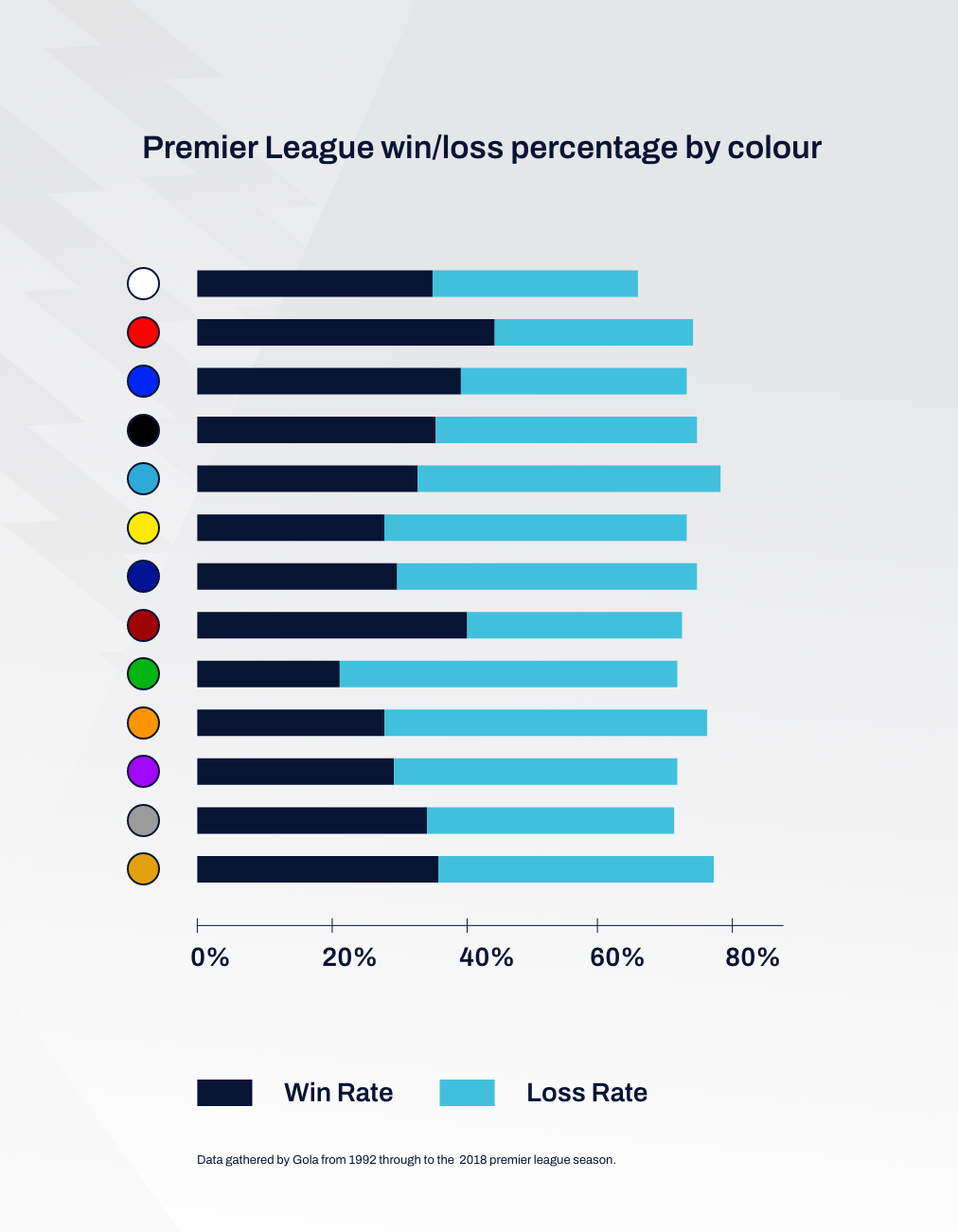Does The Colour of Football Kits Matter? Psychology Explained
Football is a game of skill, strategy, and stamina. But could a team's shirt also play a role in their success? Does the colour of a football kit matter?
It might seem like a strange question, as a team's ability to score goals and keep clean sheets surely matters more than the colour of their shirts. Yet, the field of colour psychology suggests that colours can influence our emotions and behaviours.
In football, positive emotions and behaviours can translate to subtle advantages on the pitch, which are crucial in this game of fine margins.
In this article, we'll discuss the psychology of football kit colours and explore whether these colours can impact a game's outcome or a team's overall success.

The Science of Colour Psychology in Football
Colour psychology is a field of study that examines how colours can influence human behaviour and emotion. It's a fascinating area of research with implications in various sectors, including sports.
In football, the colour of a team's kit can potentially affect players and spectators. For the players, the colour of their kit can influence their mood, energy levels, and even perceived exertion. For the spectators, the colour of a team's kit can shape their perception of the team's abilities and style of play.
Moreover, colour psychology can also influence referee decisions. Certain colours might stand out more, leading to an unconscious bias in decision-making.
The Influence of Red Football Kits
Red is often associated with power, dominance, and aggression, so football teams wearing red kits could be perceived as more threatening or formidable.
A Durham University study suggests that teams wearing red win more often, which could be due to the psychological impact of red on the players themselves, or it could influence how opponents perceive them.
Manchester United, Liverpool, and Arsenal (who all play in red) are the three teams that have won more Premier League and First Division titles than any other team that plays in different colours.
Surely that's no coincidence?
The Calm of Blue Football Kits
At the literal other end of the spectrum, we have blue. Blue is often associated with calmness, stability, and confidence.
Teams wearing blue kits might appear more composed and in control in football, potentially influencing their performance, how opponents and spectators perceive it, and even fewer yellow and red cards.
In recent football history, blue shirts have begun combating red shirts' dominance, with Chelsea, Manchester City, and Leicester City all grabbing Premier League titles.
We'll leave it up to you to decide whether the colour blue or billionaires had the most significant hand in their success.
The Rarity of Grey Football Kits
Grey is a less common colour in football kits, as it's often associated with neutrality, modesty, and practicality.
In football, a team wearing grey might not stand out as much, which could be a disadvantage, as it may not evoke strong emotions or perceptions.
In 1996, Alex Ferguson infamously made his Manchester United team change from their grey football shirts at halftime after getting battered 3-0 in the first 45 minutes. While United couldn't overturn the deficit, they did "win" the second half 1-0.
Red shirts, again!

The Role of Culture and History in Kit Colours
Cultural and historical factors can also influence the colour of a football kit. For instance, a team might choose a particular colour because it has a specific meaning in its history and culture.
The city of Nottingham played an unforeseeable part in the historical kit colours of two of the world's oldest teams.
Arsenal and Juventus were beneficiaries of shirt donations from Nottingham Forest and Notts County, respectively, which led to the club's famous shirt colours we know today (though Arsenal's had a slight edit in the 1930s thanks to Herbert Chapman).
Marketing and Merchandising: The Business of Colours
The colour of a football kit can impact marketing and merchandising. For instance, a distinctive and appealing kit colour team might enjoy greater merchandising success with more shirts sold due to their eye-catching design.
On the other hand, a team with a less appealing kit colour might struggle to sell merchandise, which could potentially impact their revenue.
Conclusion: The Future of Football Kit Colour Psychology
The psychology of football kit colours is a fascinating field. As we continue to learn more about the impact of colour on human behaviour, teams will likely increasingly consider colour psychology when choosing their kits.
A complex interplay of psychology, branding, culture, and history can influence everything from player performance to fan loyalty. As such, the future of football kit colour psychology promises to be an exciting area of research and discussion.
If you need help designing your club's custom football gear for maximum impact both on and off the field, get in touch and we'll set you on the road to glory ... or at least looking sharp on the football field.



